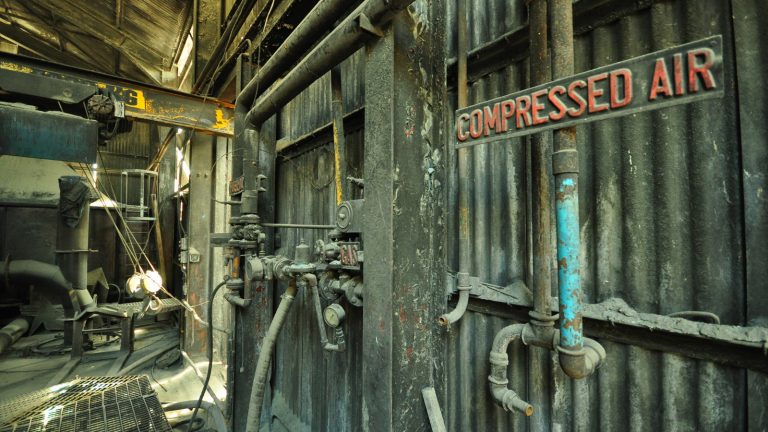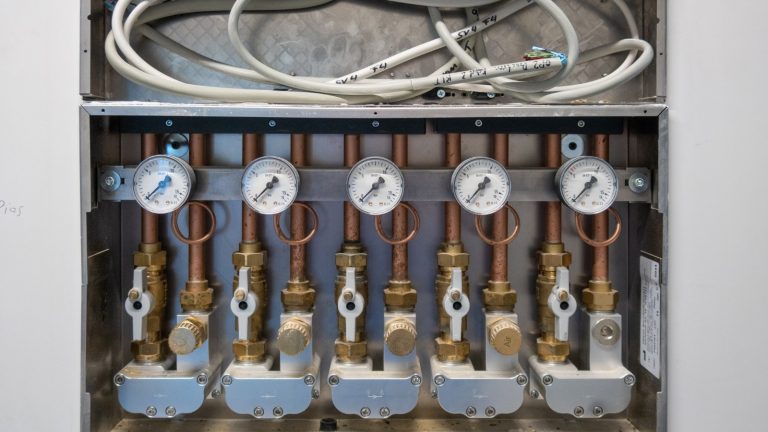The Singaporean government is constantly worrying about minimising air pollution and preventing the industrial world from polluting the air. They have set many regulations that align with development control and integrated urban and industrial planning policies. The World Health Organisation Air Quality Guidelines (WHO AQGs) are the benchmark Singapore is following, and there are certain air quality targets for Singapore to achieve per year since 2010. So far, Singapore has been in the good books, enjoying better air quality when compared to many cities in Asia, the United States, and Europe. The Pollutant Standards Index (PSI) of Singapore has remained in the green range from ‘Good to Moderate’ in the past years.
In this article, we discuss how ‘the Air Management System’ powered by Industry 4.0 capabilities enters into this scenario to back up the companies’ initiatives to keep their air quality targets adhering to the above-mentioned limits.
What is an Air Management System?

An Air Management System is designed to monitor, regulate, and maintain the quality of indoor air within various environments, including industrial facilities, commercial buildings, residential spaces, etc. It controls factors such as temperature, humidity, ventilation, and pollutant levels to ensure optimal air quality for the employees and people who are around them.
The main target of these systems is to optimise energy consumption by efficiently managing heating, cooling, and ventilation processes. As this powerful software is enriched with I4.0 capabilities, it offers real-time data and automation when it comes to air quality requirements. When such a solution is in hand, companies can minimise energy waste while maintaining a comfortable and healthy indoor environment.
Modern Air Management Systems empowered by I4.0 technology express their collaboration with advanced technologies, such as IoT sensors, data analytics, and remote control capabilities, to provide services ranging from real-time monitoring and predictive maintenance to efficient operation and management of air quality. Considering the emphasis on air quality and removing toxins from the air, an Air Management System has become a must-have tool for the industrial world in Singapore.
Top I4.0 Capabilities Hidden in an Air Management System

IoT Connectivity
When it comes to Industry 4.0 technology, Internet-of-Things (IoT) connectivity plays the role of the main actor in enhancing air management systems. These systems sync with IoT to establish connections with a multitude of sensors and devices in order to provide real-time data collection on various factors like air quality, temperature, humidity, and many more.
You can visualise it as an interconnected ecosystem, and this combination empowers air management systems to carry on with monitoring and analysing environmental conditions. The technology helps suggest precise adjustments, predictive maintenance, and data-driven insights that ultimately optimise indoor air quality and energy efficiency. If put simply, the IoT connectivity in these systems backs up seamless and responsive management of air systems in various industrial and commercial settings in Singapore.
Sensor Integration
Air Management Systems are further strengthened by sensor integration that comes under Industry 4.0 technology. The new approach supports the smooth integration of various sensors, such as temperature, occupancy, and air quality sensors, allowing for thorough monitoring and analysis of environmental conditions. These sensors provide constant real-time data, allowing preventive alterations, predictive maintenance, and data-driven insights.
Air Management Systems can utilise the huge amount of data produced by this sensor-rich ecosystem to maintain exceptional indoor air quality. It also helps to manage energy usage and adjust to changing environmental factors in commercial and industrial environments.
Data Analytics
As an essential component of Industry 4.0 technology, data analytics has a significant impact on these systems. As it combines with Machine Learning (ML) and sophisticated analytics, they are able to quickly and thoroughly interpret the vast amounts of data that are gathered from various sensors. This is what helps the companies gain insights into patterns in air quality, find anomalies, and identify new methods for optimisation and predictive maintenance, etc.
Air Management Systems ensure improved indoor air quality and resource efficiency in commercial and industrial settings by utilising data-driven decision-making. It is an important part of contemporary air quality control because it allows proactive measures to improve system performance and swiftly adjust to changing circumstances.
Predictive Maintenance
Predictive Maintenance enters the scenario as the backbone of Industry 4.0 technology, extending its powers towards Air Management Systems. As they are powered to conduct early problem identification and proactive maintenance scheduling, these capabilities reduce the likelihood of system failures before they reach crucial stages. The latter can foresee future issues and carry out swift, accurate maintenance operations by wrapping up the real-time data they have gathered from sensors and advanced analytics.
If further elaborated, this maximises resource use while lowering the potential for downtime and related expenses while ensuring the continuous functioning of ventilation and air quality control. As a fundamental element of Industry 4.0, we can see predictive maintenance raising the bar for air management in both commercial and industrial applications if we focus on efficiency and dependability.
Energy Efficiency Optimisation
This platform greatly benefits from the subordinate branch, known as ‘Energy Efficiency Optimisation’, which is made possible by Industry 4.0 technology. These systems make sure that heating, cooling, and ventilation are as energy-efficient as possible while maintaining excellent indoor air quality. They fulfil this responsibility by looking into the real-time data they receive from various sensors and sophisticated analytics. Through this powerful implementation of a data-driven strategy, businesses in Singapore can take control of their energy consumption and resource allocation to match dynamic industrial changes.
Therefore, what we can witness is that, as far as industrial and commercial settings are concerned, these novel systems have the ability to minimise the carbon footprint and reduce operating expenses just by striking a perfect balance between energy savings and environmental comfort.
Remote Monitoring and Control
This comes under the limelight as one aspect of Industry 4.0 technology, extending its high levels of compatibility with Air Management Systems. It is enriched with the capacity to monitor and modify the setup of the system, as well as handle problems, even without being on the site physically. The ability to operate remotely improves the company’s responsiveness and operating efficiency as it allows real-time temperature, ventilation, and air quality parameter modifications.
Operators can easily troubleshoot and optimise system performance from virtually anywhere. It helps with swift responses to changing conditions while reducing downtime and minimising the need for physical interventions, which is the best outcome. Industry 4.0’s backed-up remote controlling capability surely redefines air quality management, making it more adaptive and efficient in industrial and commercial contexts.
Human-Machine Collaboration
Human-machine collaboration extends its support to Air Management Systems with its ability to establish seamless interaction between humans and machines. As it is empowered to integrate with Human-Machine Interfaces (HMI), Augmented Reality (AR), and Virtual Reality (VR) technologies, employees can enhance their ability to monitor, troubleshoot, and maintain these systems. HMI simplifies user interaction and helps employees run and adjust system parameters easily. AR and VR technologies help them by offering real-time visualisations and guidance for diagnostics and maintenance tasks.
This collaborative synergy not only empowers businesses with more intuitive and effective control over air quality management but also accelerates issue resolution and decision-making. This is what makes Air Management Systems more adaptive and user-friendly while maintaining a smooth operational background at the same time.
AI and Machine Learning
AI and Machine Learning capacities powered by Industry 4.0 technology and Air Management Systems are synchronised really well. These sophisticated algorithms forecast changes in air quality and system performance by analysing data from a variety of sensors. They provide better indoor air quality while optimising ventilation, temperature management, and energy economy while making real-time adjustments to system settings.
On the other hand, AI-driven anomaly detection helps with early issue identification while allowing predictive maintenance and minimising downtime. This robust integration of AI and machine learning is important when it comes to enhancing system efficiency and establishing a dynamic, self-learning approach to outstanding air quality management.
Cerexio Air Management System

The Cerexio-powered ‘Air Management System’, is a user-friendly software solution designed to improve human well-being and environmental quality while ensuring clean and unpolluted air. This system offers strong integration capabilities with IoT and AI Predictive Analytics, allowing it to detect and analyse real-time pollution data and notify authorities in real-time. Its key benefits include pollution monitoring, data analysis, and timely alerts, making it a valuable tool for promoting cleaner and healthier air for all.
Eliminating Air Pollution with I 4.0 Powers

It is important that you achieve your business goals and expand your capabilities, travelling beyond their limitations. However, in the meantime, you are supposed to respect the values of the environment by limiting your carbon footprint as well. The perfect balance between growth and sustainability will make your way towards a glorious tomorrow, for sure. Remember that not every development destroys the balance in the environment; some can protect it like these ‘Air Management Systems’ do!
